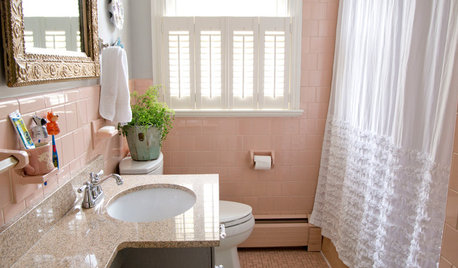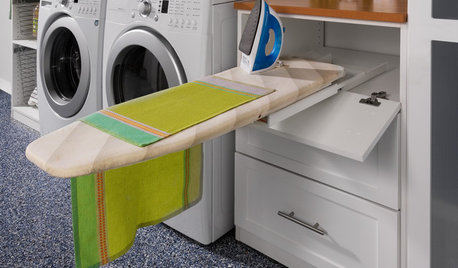Moldy Tanks?
lexie1397
17 years ago
Related Stories

LIFEHow to Prepare for and Live With a Power Outage
When electricity loss puts food, water and heat in jeopardy, don't be in the dark about how to stay as safe and comfortable as possible
Full Story
BATHROOM DESIGNThe Case for a Curbless Shower
A Streamlined, Open Look is a First Thing to Explore When Renovating a Bath
Full Story
BATHROOM DESIGNHouzz Call: Have a Beautiful Small Bathroom? We Want to See It!
Corner sinks, floating vanities and tiny shelves — show us how you’ve made the most of a compact bathroom
Full Story
BASEMENTSDesign Workshop: Is It Time to Let Basements Become Extinct?
Costly and often unnecessary, basements may become obsolete — if they aren’t already. Here are responses to every reason to keep them around
Full Story
HOUZZ TOURSHouzz Tour: From 1800s Church to Country Residence
... with a stint as a sheep-shearing shed. Now the new owner is making his own mark — and having a little fun with the design
Full Story
VACATION HOMESHouzz Tour: Scottish Farm Cottage Looks to Sun and Stars
A sheep field is home to a small, energy-efficient house that pulls ideas from mobile home design and raises the style level
Full Story
LAUNDRY ROOMS8 Ways to Make the Most of Your Laundry Room
These super-practical laundry room additions can help lighten your load
Full Story
BATHROOM DESIGN7-Day Plan: Get a Spotless, Beautifully Organized Bathroom
We’ve broken down cleaning and decluttering the bath into daily, manageable tasks
Full Story
TILETop Tile Trends From the Coverings 2013 Show — the Wood Look
Get the beauty of wood while waving off potential splinters, rotting and long searches, thanks to eye-fooling ceramic and porcelain tiles
Full Story
BATHROOM DESIGN10 Things to Consider Before Remodeling Your Bathroom
A designer shares her tips for your bathroom renovation
Full Story





susan_kc
lexie1397Original Author
Related Professionals
Edinburg Landscape Contractors · Fort Wayne Landscape Contractors · Gainesville Landscape Contractors · Lebanon Landscape Contractors · Long Branch Landscape Contractors · Munster Landscape Contractors · Pomona Landscape Contractors · Porterville Landscape Contractors · Maple Heights Landscape Contractors · Ansonia Landscape Contractors · Benton Decks, Patios & Outdoor Enclosures · Estero Decks, Patios & Outdoor Enclosures · Prichard Decks, Patios & Outdoor Enclosures · Villa Park Decks, Patios & Outdoor Enclosures · Scotts Valley Decks, Patios & Outdoor Enclosuressherryazure
sherryazure